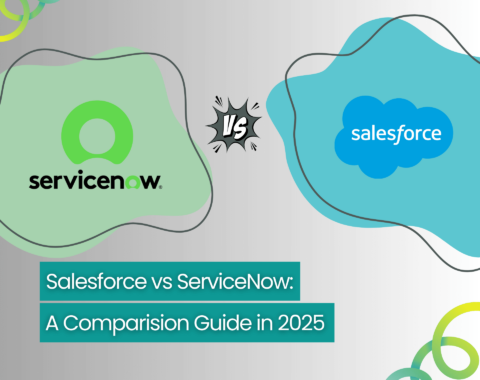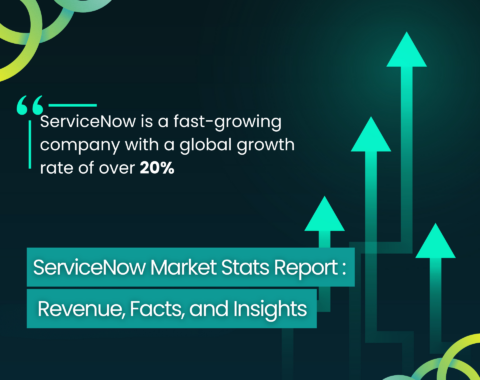Leverage Built-In AI To Simplify, Automate, And Accelerate Complex Change activities & Workflows With ServiceNow Change Management!

Change Management
ServiceNow Change Management is a new-age solution enabling organizations to manage, track and approve IT systems and process changes. It provides a centralized platform for managing change requests, approval workflows, and change implementation. Change management aims to use a controlled and efficient manner to ensure changes, reducing the risk of incidents and ensuring business continuity.
Change Management Features
Multimodal change
It will become easier for change managers to customize changes in activities and flows to specific cases.
Change success score
Automate approvals for low-risk changes using a numeric score and evaluate the success probability.
Change approval policies
Change teams can use individual change conditions to get help with balance velocity, stability, & compliance.
Risk intelligence
Make data-driven risk predictions using machine learning similarities algorithms and classification.
ServiceNow Change Management Process
Change Initiation
Evaluation
Approval
Scheduling
Implementation
Verification
Close
Review
Change Management Benefits
Improved visibility
Provides a centralized platform to track and manage change requests, improving visibility into change activities.
Streamlined processes
Automates change request workflows and approval processes, reducing manual effort and increasing efficiency.
Increased collaboration
Facilitates collaboration between IT teams, ensuring that changes are communicated and executed appropriately.
Risk Reduction
Helps reduce the risk of incidents by ensuring changes in a controlled and approved manner.
Better Compliance
Supports compliance with IT service management (ITSM) and regulatory standards by providing a structured approach to change management.
Enhanced Report & Analytics
Enables organizations to generate reports and gain insights into change activities, helping identify trends and improvement areas.
Improved decision-making
Provides stakeholders with the information they need to make informed decisions about changes, leading to better outcomes.
Increased agility
Enables making changes more quickly and efficiently, responding more rapidly to changing business needs and staying ahead of the competition.
How Can Aelum Consulting Help with ServiceNow Change Management?
Aelum Consulting is a well-known Premier ServiceNow Partner with a team of professional and experienced experts. We can help with ServiceNow change management in several ways, including:
Process optimization
We can help optimize ServiceNow change management processes to ensure they are efficient, streamlined, and effective.
Implementation
We can help implement ServiceNow change management, providing guidance and support with every step of the way.
Training and education
We can provide training and education to ensure that ServiceNow change management is fully understood and effectively utilized by the relevant stakeholders.
Integration
We can integrate ServiceNow change management with other IT systems and processes to ensure it is integrated seamlessly into the overall IT landscape.
Configuration and customization
We can help configure and customize ServiceNow change management to meet the precise needs of an organization.
Change Management Best Practices
Develop a clear vision and strategy
Before embarking on any change initiative, you must clearly understand what you want to achieve and how you plan to get there. It involves developing a vision and strategy that outlines the change’s goals, objectives, and desired outcomes.
Engage stakeholders
Stakeholder engagement is critical to the success of any change initiative. It’s essential to involve all relevant stakeholders in the change process, including employees, customers, suppliers, and partners. It helps build buy-in and support for the change and ensures everyone is aligned around the vision and strategy.
Communicate effectively
Stakeholder engagement is critical to the success of any change initiative. It’s essential to involve all relevant stakeholders in the change process, including employees, customers, suppliers, and partners. It helps build buy-in and support for the change and ensures everyone is aligned around the vision and strategy.
Plan and execute effectively
Change initiatives require careful planning and execution. It involves developing a detailed project plan, identifying and mitigating risks, and allocating resources effectively. Monitoring progress closely and adjusting the plan to ensure the change is implemented successfully is essential.
Build capability and capacity
Change initiatives often require new skills, knowledge, and capabilities. It’s essential to provide employees with training and development opportunities to ensure they have the skills and knowledge needed to support the change. It also helps to build capacity for future change initiatives.
Monitor and evaluate
Change initiatives should be monitored and evaluated to ensure they are achieving the desired outcomes. It involves measuring progress against key performance indicators (KPIs), gathering stakeholder feedback, and making adjustments to ensure the change is sustainable and delivers long-term benefits.
Frequently Asked Questions
Change management is essential because changes to an organization’s systems and processes can significantly impact its operations and bottom line. It helps ensure that changes are made in a controlled and predictable manner. Also, it can be helpful in reducing the risk of disruption and improving the chances of success.
The steps involved in Change Management typically are as follows:
- Identifying the need for change,
- Assessing the impact of change,
- Planning and scheduling the change,
- Communicating the change,
- Implementing the change, and
- Evaluating the results.
Change Management is typically a cross-functional effort, with responsibilities shared between various teams, including IT, operations, business, and management. The specific roles and responsibilities will vary depending on the size and complexity of the organization.
Change Management can integrate with other processes, such as Release Management and Deployment Management. It can be helpful in ensuring that changes are made in a consistent and controlled manner. Release Management and Deployment Management provide specific tools and techniques for managing and delivering software releases. On the other hand, Change Management provides a framework for managing and controlling changes to the organization as a whole.
Some best practices for Change Management are as follows:
- Having a clear change management process in place,
- Involving all relevant stakeholders in the change process,
- Providing clear and timely communication about changes,
- Performing a risk assessment for each change, and
- Monitoring and evaluating the results of changes continuously.
Our Clients




















































